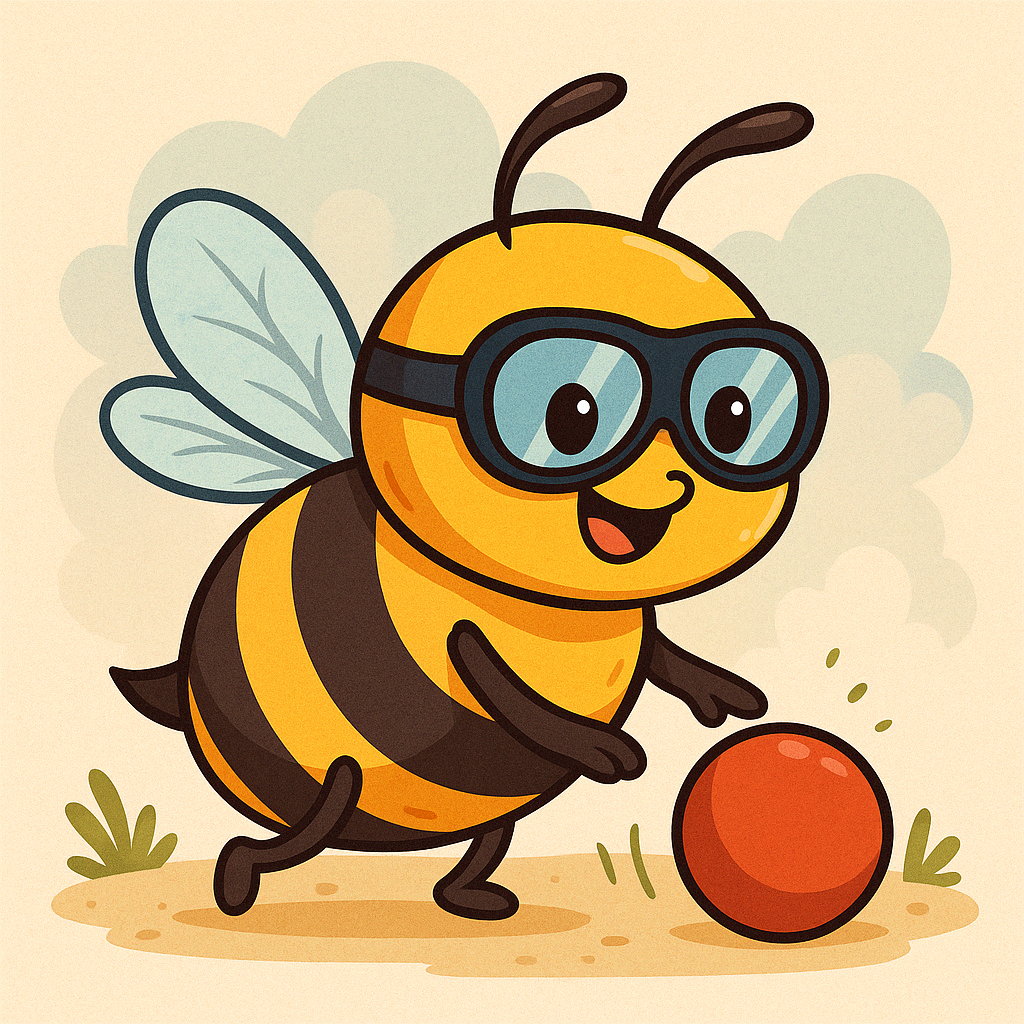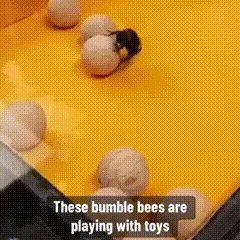Do Bees Play? What Bumblebees Teach Us About Insect Intelligence

Natural Sciences | The Varrock Street Journal
Welcome back, Varrock Street Community!
When you think of animals that play, you might picture puppies, dolphins, or primates. But what if I told you that bumblebees, yes bees, also engage in play?
That’s exactly what a groundbreaking study from 2022 revealed—and it’s reshaping how scientists think about insect intelligence, emotional lives, and even consciousness. This week, we’re buzzing into the world of bee behavior to explore what it means when an insect plays just for fun.
🧠 What Did the Study Show?
Researchers at Queen Mary University of London designed an experiment where bumblebees were given the option to walk straight to a reward (sugar water) or detour to a section of their enclosure filled with tiny wooden balls.
Surprisingly, the bees chose to roll the balls, even when it offered no reward. They returned repeatedly to do it—especially younger bees—and showed consistent patterns in how they interacted with the objects, mimicking the behaviors of play observed in mammals and birds.
The takeaway? These bees weren’t seeking food or solving a task. They were engaging in behavior for pleasure.

🐝 Why Is This a Big Deal?
Play behavior is typically linked with higher-level cognition, learning development, and emotional expression. Seeing this in bumblebees—who have tiny brains (about the size of a poppy seed)—challenges the idea that play is exclusive to “intelligent” animals.
This adds to a growing body of research suggesting insects may have:
- Short-term memory
- Tool use
- Individual preferences
- Positive and negative emotional states
🧬 How Was the Study Done?
- Species used: Bombus terrestris, a common European bumblebee
- Design: Clear paths to rewards + optional side zone with rolling balls
- Controlled for variables: The bees were not trained or rewarded for rolling
- Key findings: Younger bees played more often; ball-rolling behavior was voluntary, consistent, and repeatable
The findings were published in the journal Animal Behaviour in October 2022.
👉 Read the National Geographic article here
🧠 Why This Matters
If bees can play, it suggests that emotion-like states and motivation may exist in creatures we previously thought were entirely instinct-driven. That changes how we think about:
- Animal sentience
- Welfare in insect farming
- Pollinator conservation
- The definition of intelligence itself
And more broadly, it reminds us that even the tiniest creatures may experience the world in more complex ways than we’ve imagined.
🌟 Spotlight on the Future
This research opens doors to new scientific frontiers:
- Behavioral enrichment for lab-reared insects
- Neuroscience of insect emotion
- Reassessing how we treat insects in farming, pest control, and environmental policies
- Developing ethics frameworks for all animals, not just those with backbones
It also strengthens the argument that preserving biodiversity isn’t just about protecting the planet—it’s about protecting sentient life, no matter the size.
😲 Did You Know?
- Bumblebees can be trained to solve puzzles and even teach each other how to do it.
- A bee’s brain contains less than 1 million neurons, compared to 86 billion in humans—yet they still exhibit learning, memory, and exploration.
- Bees may have preferences for certain flowers based on color or scent, and will revisit them even without reward.
Here is a fun video if you want to see more!
🧠 Reflection Questions
- If insects like bees can play, should they be included in animal welfare laws?
- How might recognizing emotion in insects change how we manage agriculture and pest control?
- What does this tell us about the link between brain size and intelligence?
📚 References (APA Format)
National Geographic. (2022, October 27). Bees play with toys for fun, a first for insects. https://www.nationalgeographic.com/animals/article/bees-can-play-study-shows-bumblebees-insect-intelligence
Aleksandrova, E., et al. (2022). Rolling and play-like behavior in bumblebees. Animal Behaviour, 191, 121–130. https://doi.org/10.1016/j.anbehav.2022.07.006
👋 Final Thoughts
The next time you spot a bumblebee dancing around your garden, consider this: maybe it’s not just working. Maybe it’s playing.
📲 Stay connected and keep learning:
- Instagram: @thevarrockstreetjournal
- TikTok: @varrock.street.jo
